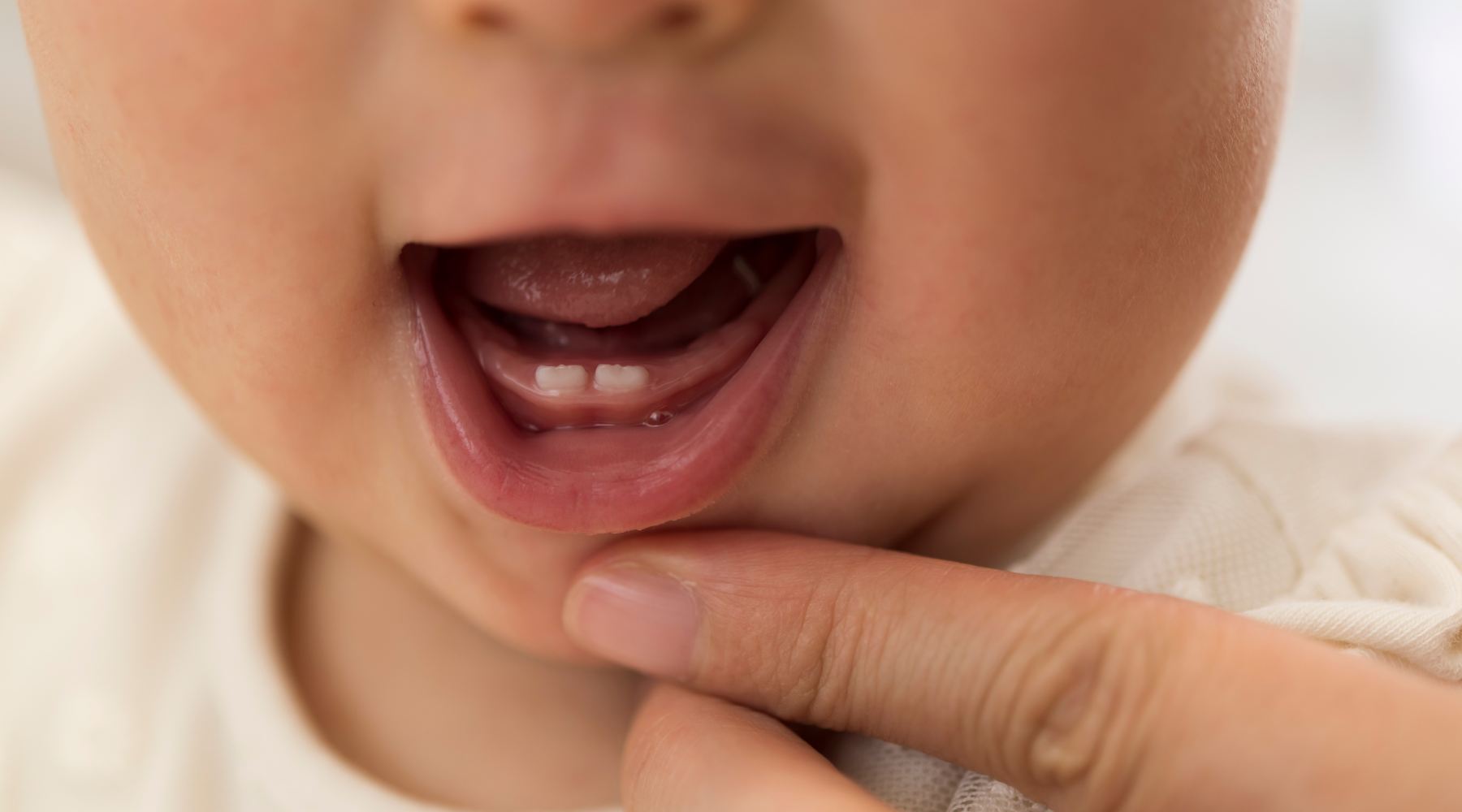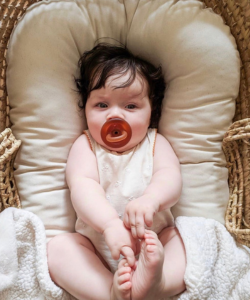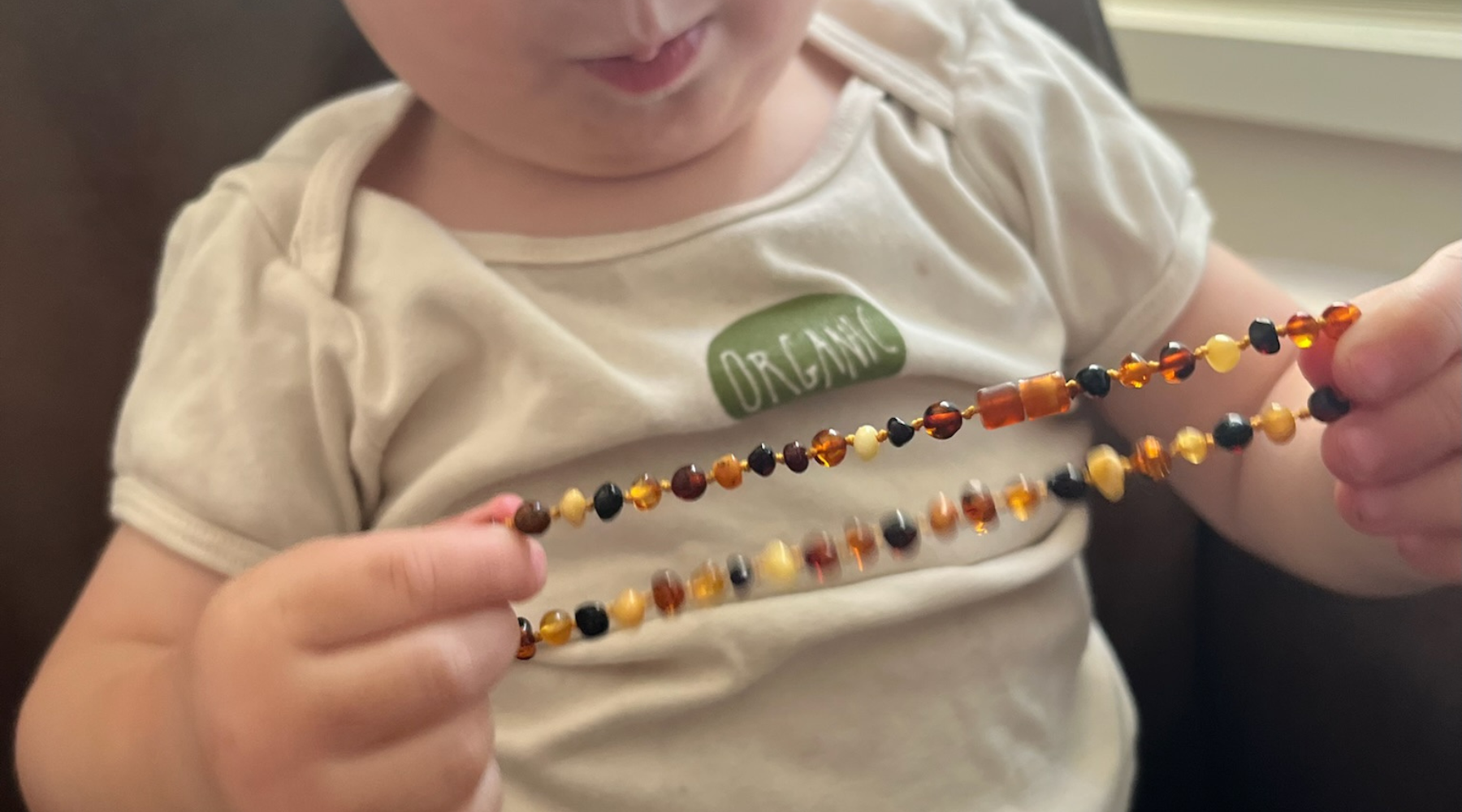
Know the Top Signs of Teething
Teething isn’t fun. Period. Knowing the top signs of teething can certainly help though. A new tooth can take weeks to show its pearly white beauty. Oftentimes, as teething starts deep in the gum, your child starts to feel the symptoms, and without knowing what to look for, you might think your baby is just cranky—sleepy, hungry, just being a “baby”. Without words, your baby is reliant upon you, their wise parent, to know the cues. Let’s educate ourselves, so that we can help support these wee ones through this painful time.

Common signs of Teething:
(contributed by @braueraus)
- Red Swollen Gums
- Increased Dribbling
- Flushed Cheeks
- Ear Pulling
- Sucking On Fingers Or Fists
- Changes In Appetite
- Trouble sleeping
- Eruption Cysts
Let’s go a little deeper :
Red, Swollen Gums
During the process of teething, your little one’s teeth need to push their way through the gum. You may notice this leaves their gums looking red, swollen and tender.
Understandably, this may cause some discomfort for your bub and they may become irritable. You might find that feeding them chilled soft foods like yoghurt and gently massaging their gum with a clean finger can help to provide some relief. Also, teething on one of our Ecopiggy Ecoteethers is a helpful tool to support your child through these symptoms of teething.
Increased Dribbling
As a parent, you’re likely well-acquainted with dribble. After all, babies sure do produce a lot of it!
Although drooling is normal for all babies, teething can stimulate the mouth to ramp up saliva production even further.
While the dribble itself most likely won’t bother your bub, it may irritate the skin around the mouth and cheek. Taking a soft cloth and gently wiping away excess drool from their face can help to reduce irritation. Many parents have found tying an organic cotton wash cloth through the loop of an Ecopacifier, provides a soft cloth to soak up the extra dribble while teething.
Flushed Cheeks
Just as your little one’s gums may become red during teething, so too might their cheeks. Flushed, red cheeks are a common teething symptom and can be caused by a couple of factors.
On the one hand, when your baby’s pearly whites are preparing to come through the gums, they may cause irritation and inflammation. This process can cause the cheeks to look red and leave them feeling warm to the touch. Ecopiggy Baltic Amber Teething Necklaces are naturally anti-inflammatory and can be worn wrapped twice around your child’s ankle or worn as a necklace. Also, available with natural gemstones for a little extra support.
Although warm cheeks are a normal sign of teething, a fever is not. If your child is experiencing a fever above 38°C, seek the advice of a health professional.
On the other hand, as mentioned, excess teething may irritate your baby’s skin a cause it to become red around the mouth and on the cheeks.
Ear Pulling
Ear pulling usually isn’t anything to worry about and may be a sign that your little one is feeling tired or that their ears may be blocked.
Although many people associate ear tugging with the onset of teething, it’s unclear whether or not this is the case.
If your child is pulling at their ears and you’re concerned that they are unwell, seek the advice of your pediatrician.

Sucking On Fingers Or Fists
It’s common for teething babies to suck on their fingers, fists or anything else they can get their little hands on.
This could be an indication that they’re experiencing some discomfort, as chewing is one way that your little one can attempt to soothe themselves and relieve some of the pressure.
Have you seen our blog post about how to upcycle your child’s Ecopacifier into a teething tool? Read more here.
Changes In Appetite
Reduced appetite is commonly linked to teething pain. As the teeth begin to push through your little one’s gums, they may find eating uncomfortable.
On the other hand, you might notice that your baby’s appetite increases during periods of teething. This is likely their attempt to feel counter pressure on their gums. Counter pressure can also be found by enjoying an Ecopacifier or Ecoteether.
Trouble sleeping
Just as you might have trouble dozing off to dreamland during periods of discomfort (such as a common cold or mild ache), your baby might also have trouble nodding off while they’re teething.
Cutting new teeth is an uncomfortable experience for many bubs, causing them to have trouble falling asleep or to wake during the night.
Eruption Cysts
When your little one is teething, you might notice a blueish-grey bubble on their gum where a new tooth is about to appear. This build-up of fluid is commonly known as an eruption cyst or teething blister and is a common symptom of teething.
Eruption cysts are completely normal and will usually disappear on their own. If your little one experiences teething blisters, try to avoid touching them. If an eruption cyst lingers or doesn’t resolve itself, it may be time to visit your pediatrician or dentist.
Although these eight common signs of teething might be uncomfortable for your bub, keep in mind that it is a normal and important stage of life that all children experience. If you have any concerns about your child’s health, seek the advice of a health professional.






Leave a comment
This site is protected by hCaptcha and the hCaptcha Privacy Policy and Terms of Service apply.